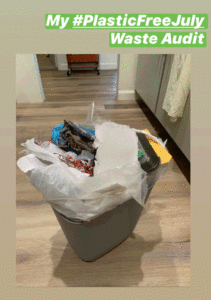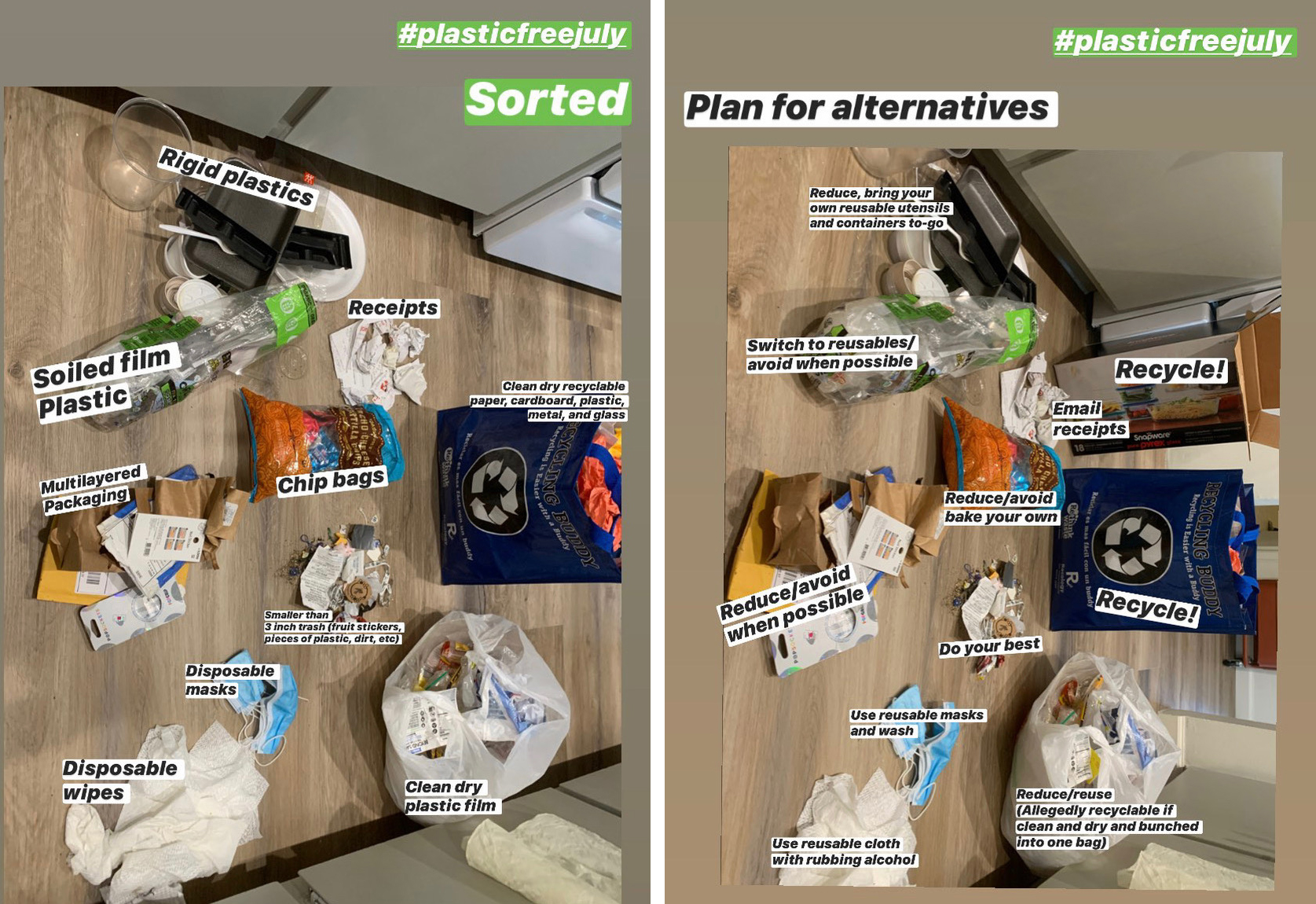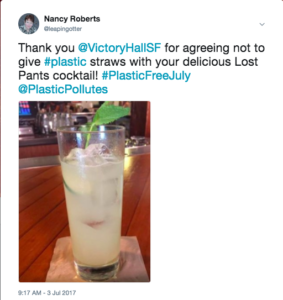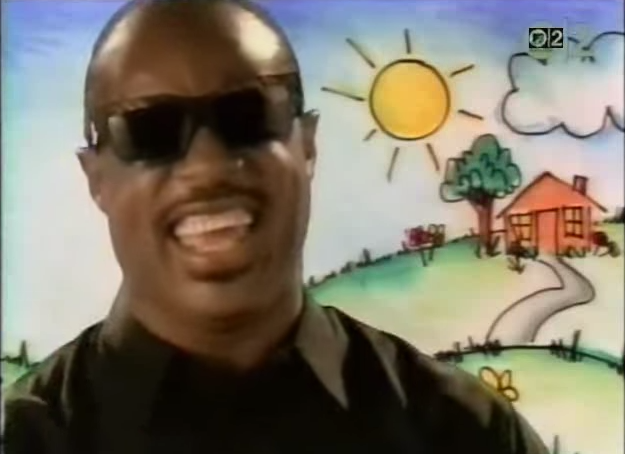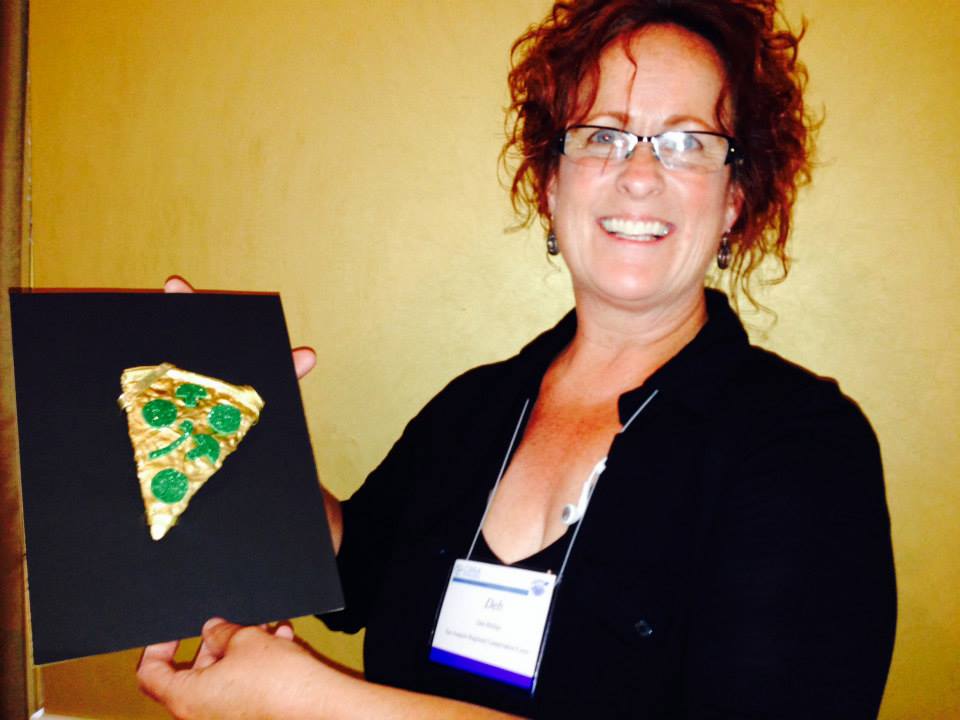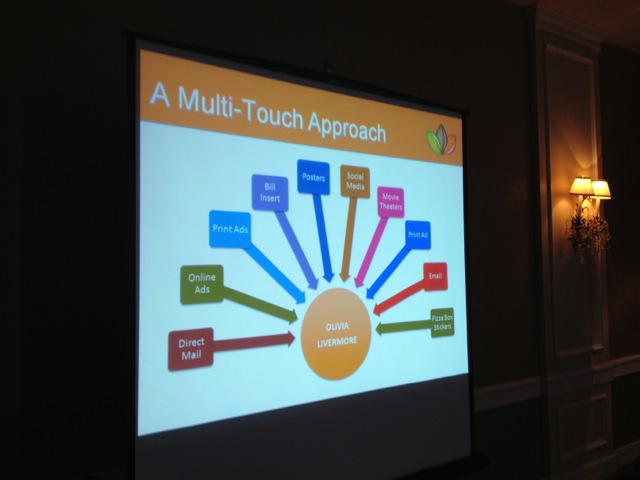In environmental outreach work, reaching people when they are most open to effective feedback is always a challenge. Many waste agencies are using “oops tags” to indicate to residents that they have put the wrong items in the wrong carts, e.g. “OOPS – this item belongs in recycling” or “OOPS – only food scraps in the green cart, please!”
The Gigantic team has been working with clients on various kinds of OOPS tags for some years now. While we believe that customized, one-to-one outreach is effective, it is difficult to measure if the tags are responsible for positive impact.
We would love to experiment with taking the feedback one step further, by having haulers NOT pick up contaminated carts. This has been tried elsewhere, with positive results.
For now, we are continuing to refine and test various cart tags. Our latest effort: placing “OOPS” tags on Garbage carts, to draw attention to the large presence of food scraps and other items in the Garbage that should be recycled or composted.
Below are some examples of oops tags that Gigantic has created with various clients. We would love to discuss OOPS tags and the strategy behind them with you:
This tag, to be placed on Organics carts, is simple:
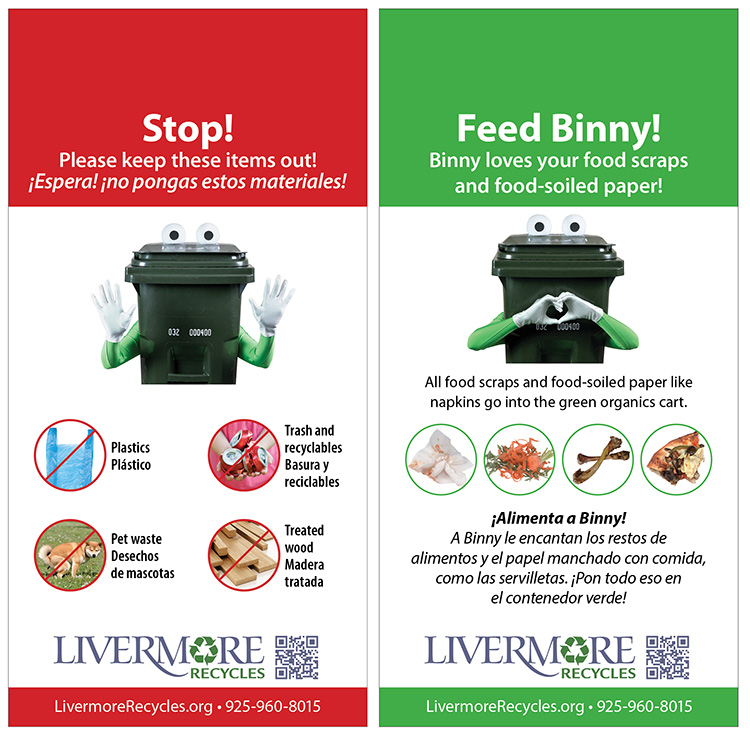
In 2023, we made a more elaborate tag that the outreach team could “customize”, depending on the contaminant. We understood from resident surveys that people were unsure or even skeptical about what happens to food scraps in the Organics cart. This tag also confirms that rich compost is made from the food scraps, and connects correct use of the organics cart with making healthy compost for farmers:
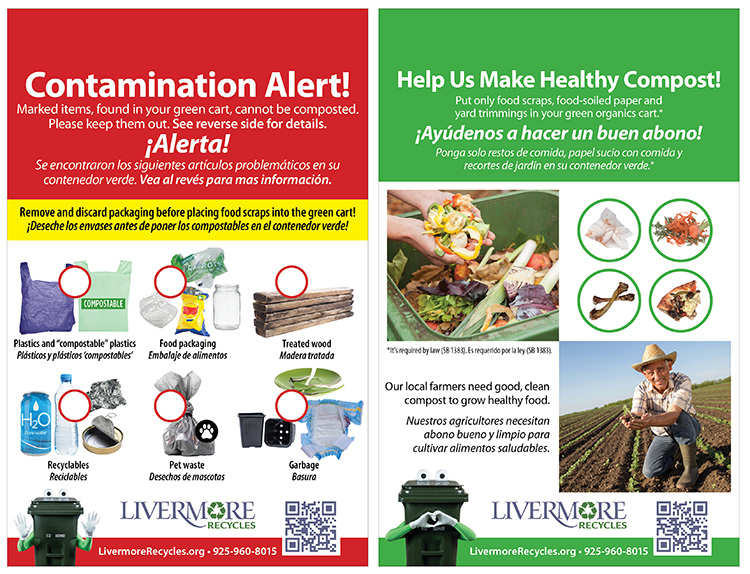
We are experimenting this year with placing an “oops” tag on the Garbage cart, calling out the items that should be in Recycling or Organics:
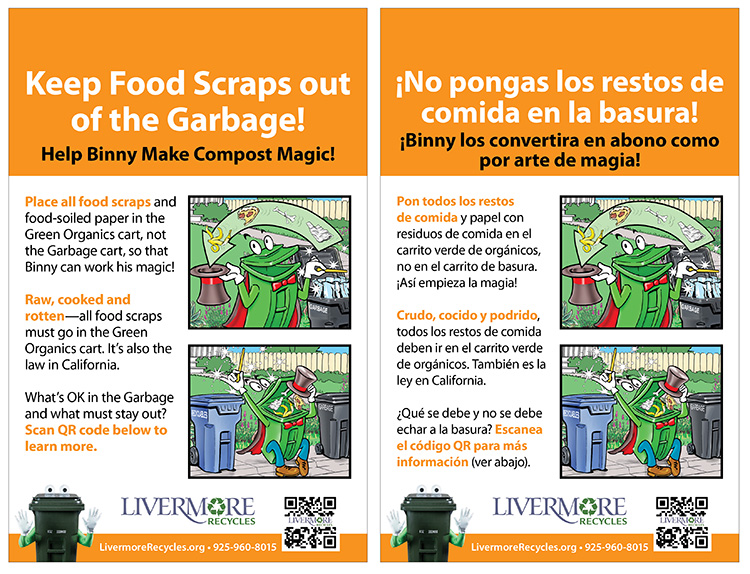
For Milpitas, we helped refine their tag design, which uses the same tag for all carts. Audit staff circle the appropriate cart, and provide very specific feedback on the types of items found (see image below). Milpitas staff have reported the tags are working work well, especially when they have the opportunity to speak directly with a resident, but that they need to add a few additional categories of contaminants.
While difficult to tie results directly to cart tagging, City staff noted that they are seeing some positive trends in households selected for a pilot project. The pilot area received food waste prevention outreach and then OOPS tags shortly thereafter. Follow-up audits over two years show some improvements. The fullness of the food scrap compartment increased from 8.8% full to 24% full. At the same time, contamination decreased by 42.5%.
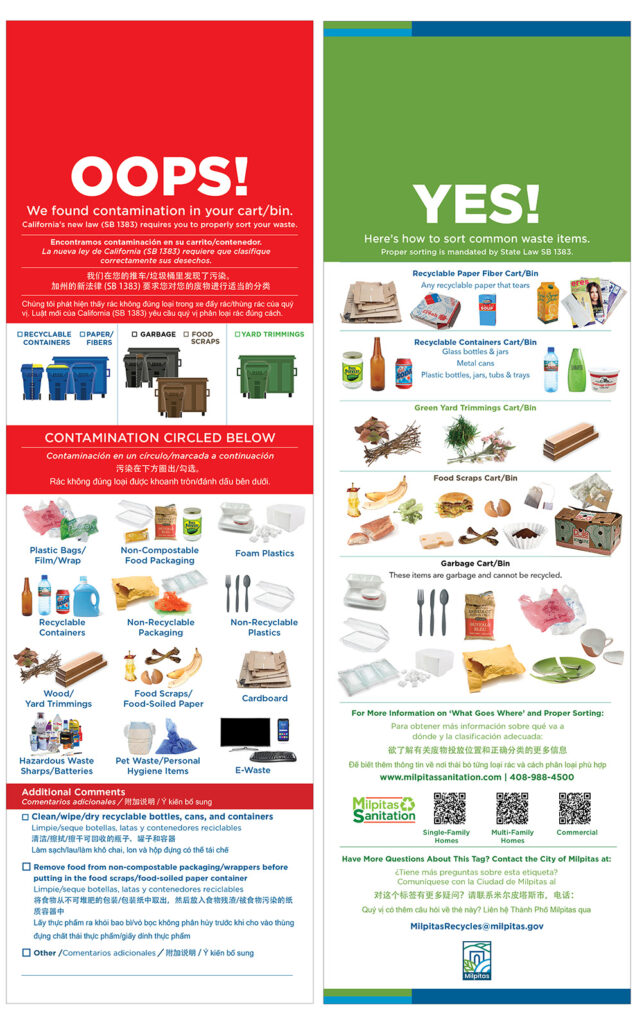
There’s no one right way to use OOPS Tags, but they’re one of the most evidence-based ways to address contamination. They make a great addition to a cart-contamination reduction strategy.


